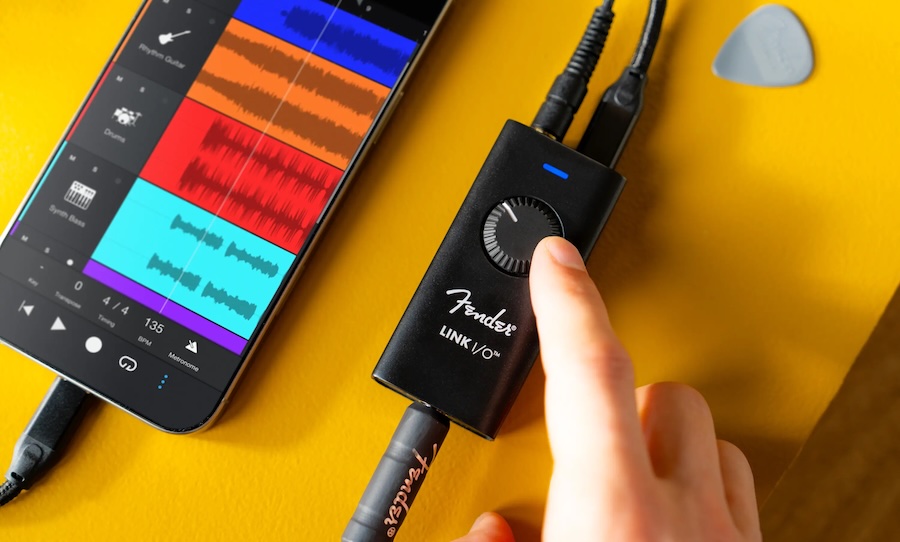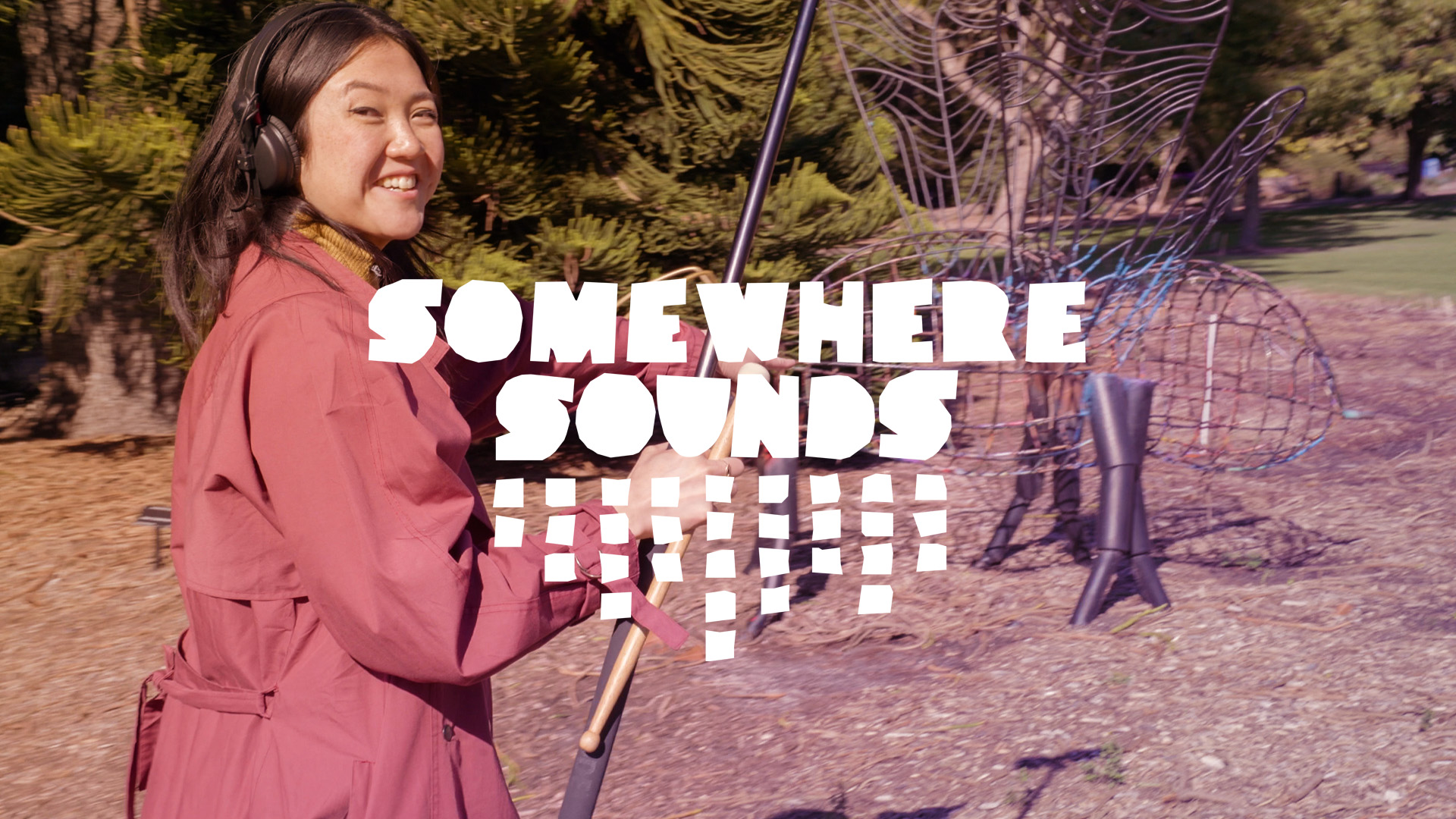Right now, live music is on hold. In the meantime, many musicians have taken to the home recording studio to continue working and creating. For musicians who are used to laying down tracks and working in a studio, transferring that work to a home environment can be a really natural process. But home recording of orchestral instruments is less common, and for musicians used to the acoustic world of live performance the concept of creating your own home studio can be daunting.
With a few adjustments, recording orchestral instruments at home can be simple, and you can get back to creating music in no time. Here are the first steps you should take to get up and going with a home studio for orchestral instruments.
Taking on a home recording project with orchestral instruments and unsure where to start? Take a look at some of the first things to consider.
Shaping your acoustics
Acoustically speaking, recording studios can often be unfriendly to orchestral instruments. A dry, controlled environment can result in a flat and dead sound, and generally over-emphasises the worst qualities of the instrument. In that sense, home recording can actually do some favours to orchestral instruments; a decent sized room is going to do be more flattering than a small studio. Unfortunately, home recording comes with its own set of acoustic issues.
If possible, recording in a larger space like a living room is always going to be your best bet. Otherwise, any room with harder, reflective surfaces, like concrete, wood, or glass, is going to have a livelier acoustic. As anybody who’s ever sung in the shower will know, the bathroom can be a very forgiving acoustic, but louder dynamic ranges, especially from brass instruments, can quickly become too much in there.
Something worth experimenting with is the position and direction of your instrument in relation to various reflective surfaces. Even in a heavily carpeted room, you may find there’s a particular sweet spot against a mirror or bare wall, and with thoughtful placement of your microphone, you may be able to pick up these reflections and create a sense of a larger space.
Another common issue is the presence of external sound sources. This is likely to affect you if you live in an apartment, with other people or pets, or in urban areas. If these elements aren’t under your control, then a bit of insulation is in order. There are plenty of commercial options available, but if you’re looking for a home-cooked solution, a mattress is a near enough approximation that will be enough in most cases. If not, then the solution might require a bit more investment.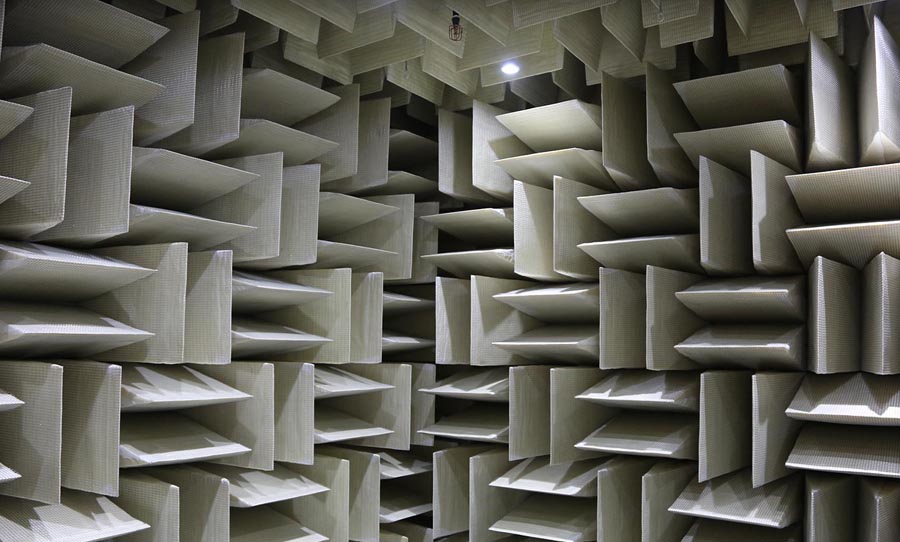
Choosing a microphone
Choosing the right microphone for recording will always depend on the instrument. That being said, there are a few general rules to consider, which helps to narrow down both the kind of microphone and the correct placement of it.
When it comes to brass instruments, the source of the sound is very directional. This means some thought needs to be put into the placement of the microphone in relation to the angle of the bell of the instrument, or you’ll run into problems with distortion, wind pop and boom, and harsh directional harmonics. Generally speaking, microphones for brass instruments should be placed a metre or more from the source, and offset slightly either above or below the bell.
Microphones should be in front of the player for trumpets and trombones, and behind for tubas and french horns, given the direction of the bell. An off-axis approach can also help to offset the large volume output of brass instruments. For muted playing, it’s often a good idea to move the microphone slightly closer to compensate for the reduction in volume.
For string and woodwind instruments, the sound radiates outwards from the body of the instrument. This means you don’t need to worry too much about the directional issues with brass instruments, but the sound source does create other issues. One thing to remember for all instruments is the extra noise created just by playing the instrument – key or bow noises, loud breathing, or even moving around while playing.
For this reason, woodwind instruments should be miked towards the bell of the instrument, and string instruments should be miked over the bridge, to avoid picking up too much noise from other sources. Woodwind instruments usually sound best when miked at around a metre, and string instruments are generally miked a little closer than that.
In terms of the type of microphone, there is a large variety that generally gets good results with orchestral instruments. Large-diaphragm condensers will capture high-end detail well, and preserve the brilliant tone of strings, especially the violin. Ribbon microphones respond well to the large dynamic variations of woodwind and brass instruments, and can temper the attacks of these instruments. Ultimately, if you want the best results, some experimentation is in order, but these are a good place to start.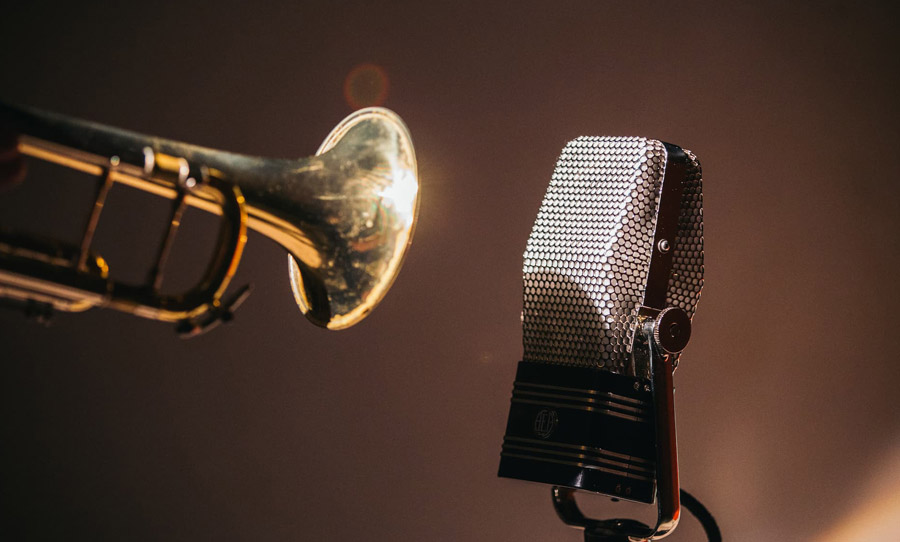
The right DAW
Choosing the right DAW, or digital audio workstation, for recording orchestral instruments can be an intimidating process. While simple audio tracking is obviously an essential feature of any DAW, beyond that the major DAWs offer a wide range of other features to take into consideration.
Pro Tools is generally considered the industry standard for a reason. If you’ve ever considered working in a professional studio environment, you’re likely to come across Pro Tools again, so it could be worth familiarising yourself with it.
In terms of recording and editing audio, Pro Tools is hard to beat. A lot of what is now considered standard in non-destructive editing and take-comping comes from innovations in Pro Tools. Designed to work with complex studio gear and large mix consoles, Pro Tools does just as well in home studios.
If you’re working with orchestral instruments it’s likely you’ll also be working with standard musical notation. It’s worth noting, then, that Pro Tools’ parent company, Avid, also publish popular music notation software Sibelius, and both programs can be set up easily to integrate with the other. Pro Tools also features one of the more intuitive tempo editors in a DAW, which is useful for notated music with complex time signatures and precise rhythmic ideas.
That being said, it’s definitely one of the more expensive options if you’re operating from home. While Pro Tools does provide a more intuitive editing environment than a lot of other DAWs, the steep price tag might be a deal-breaker if that’s all you’re using it for.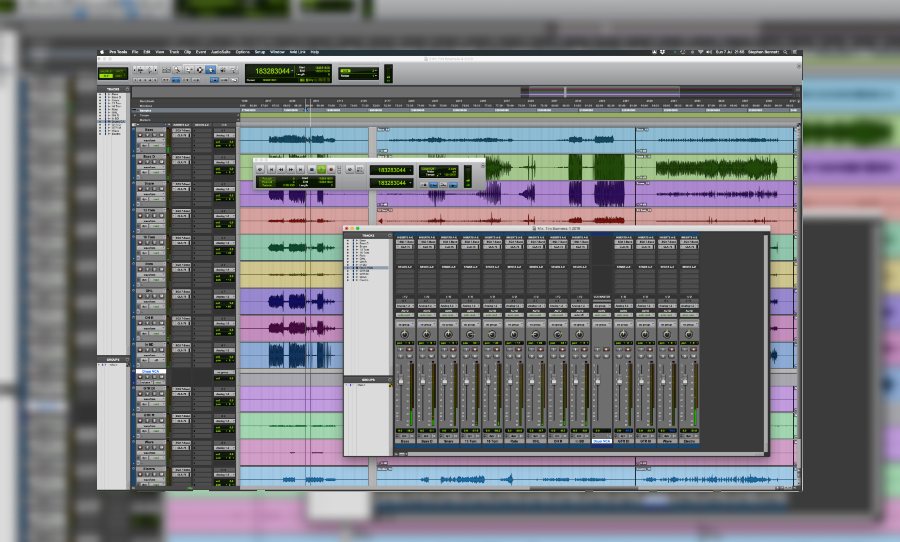
While Logic Pro might offer less powerful editing than Pro Tools, it makes up for it in other ways. Notably, it’s significantly less expensive while still being very much a professional product, making it a good choice for home production.
Logic also offers a pretty impressive array of MIDI editing capabilities, virtual synths, and effects right out of the box, so it’s a strong option if you’re creating tracks with both recorded and synthesised elements. Another major benefit of Logic is the clean and streamlined workflow you would expect from an Apple product. This makes it a pretty appealing product as a basis for home recording, and it offers plenty for beginners and veterans alike.
Of course, there is another DAW from Apple that bears mentioning – GarageBand, the IKEA of digital audio workstations. GarageBand clearly has its limitations, but it offers a number of significant benefits, the largest, of course, being that it comes free with every Mac. While many projects will fairly quickly outgrow the capabilities of GarageBand, the simplicity of the platform makes it incredibly fast and easy to record. If your intention is just to lay down some tracks, and fast, GarageBand might just do the trick.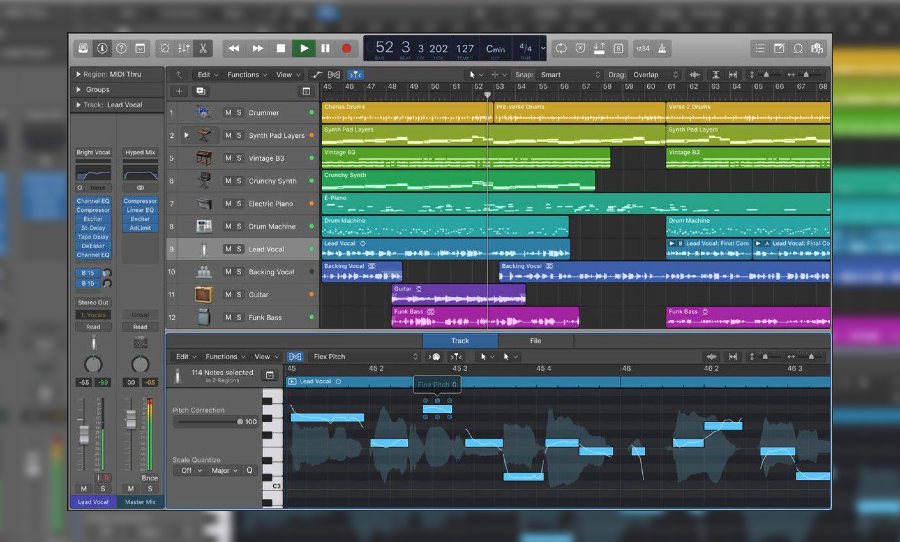
Ableton Live offers a more unique approach. Originally built for DJs and electronic musicians for use in live sets, there’s more than enough capacity to make it an attractive option for studio work. In fact, the features that make Live ‘live’ dovetail nicely with the increasing use of electronic elements in contemporary art music.
Features such as MAX for Live, which integrates popular programming architecture MAX/MSP within Live, result in a DAW that, unlike many other options available, provides a genuine environment for performance. Live also features one of the stronger tempo control options in a DAW, allowing it to handle challenging rhythmic elements easily.
Because of Live’s origins as a tool for DJs, the recording capabilities of the program don’t quite match those of some other DAWs. However, as a tool for both recording and performing, Live offers something other DAWs struggle to compete with.
Of course, this isn’t an exhaustive list of DAWs. There are plenty of other platforms available and all of them have unique features to offer, but the only way to decide what’s going to work best for your needs is to get hands-on experience.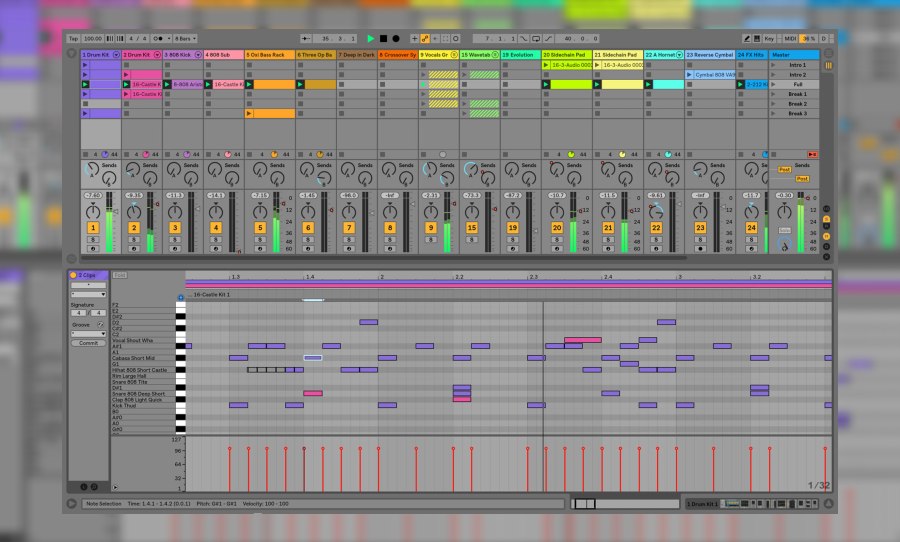
A new direction
At the end of the day, it’s up to you to find what’s going to work best for your specific situation. A good amount of experimentation is always going to lead to happier results. Immersing yourself in recording technology can help you understand your own instrument in a new way, and lead to new methods of approaching performance.
Innovations in recording have been an indispensable component of classical music since the 1950s. In the 1960s, works like Steve Reich’s phasing pieces and Alvin Lucier’s resonance experiments developed these ideas into compositional credos. These days, cross-genre composers and performers such as Anna Meredith, Zeena Parkins, and Todd Reynolds are reshaping the direction of music, seamlessly integrating recorded and live elements, electronic and acoustic instruments, and improvised and notated music, to create new pathways in music performance. In experimenting with home recording on orchestral instruments, maybe you’ll discover something you never dreamed of.
